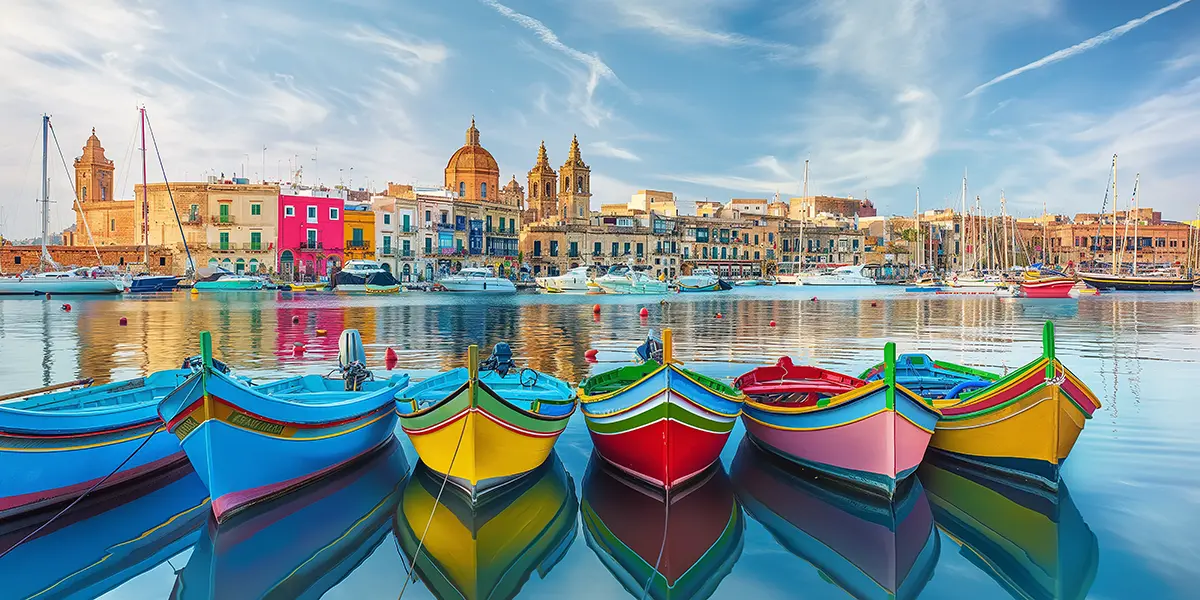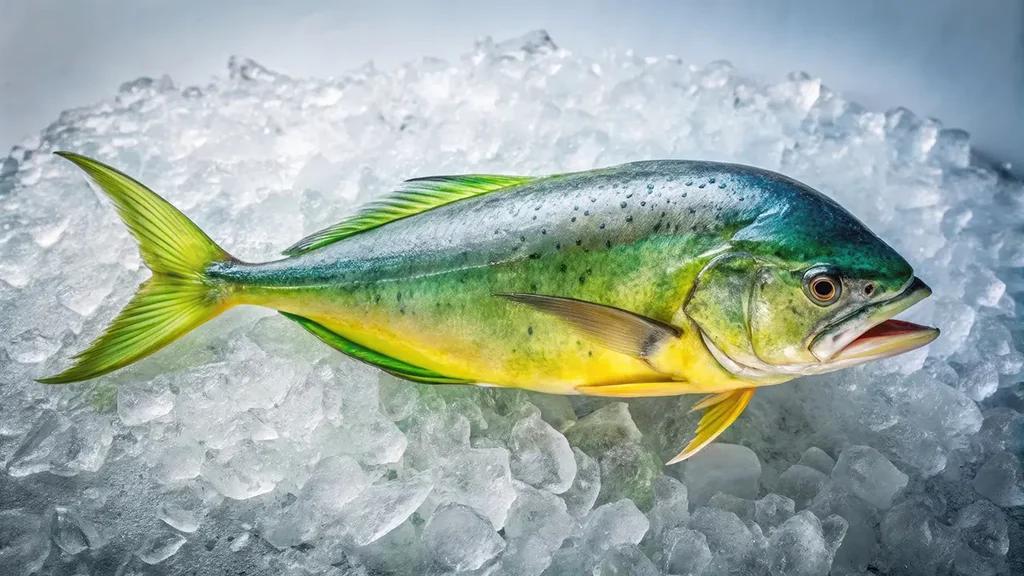
Lampuki, a migratory fish cherished across the Mediterranean, unites communities through shared recipes and traditions. From Malta's iconic lampuki pie to Italy's lampuga specialties, this fish symbolizes unity in a region defined by culinary diversity.
The Mediterranean Sea, a cradle of culture and culinary tradition, is home to countless delicacies. Among them, Coryphaena hippurus—commonly known as lampuki in Malta—stands out as a fish that transcends borders, connecting communities through shared recipes and traditions. This migratory fish, with its vibrant appearance and versatile flesh, is celebrated in kitchens from Greece to Spain and beyond. Its importance lies not only in its flavour but also in its cultural significance, serving as a symbol of unity in a region defined by diversity.
In this post, we’ll explore the regional significance of Coryphaena hippurus across the Mediterranean. From Malta’s iconic lampuki pie to Tunisia’s spiced fish tagines, this fish tells a story of shared heritage and culinary creativity.
Also known as dolphin fish or dorado, Coryphaena hippurus is a highly migratory species that thrives in warm, open waters. It is known for its shimmering golden and blue hues and streamlined shape, making it a prized catch for fishermen. What sets it apart is its rapid growth and seasonal abundance, particularly during late summer and early autumn, when it migrates through the Mediterranean.
Fishing techniques vary across the region, but one of the most iconic methods is Malta’s kannizzati—rafts made of palm fronds placed on the sea to attract the fish. This traditional practice, passed down through generations, reflects the deep connection between Mediterranean communities and the sea.

In Malta, lampuki is more than a fish—it’s a seasonal phenomenon. From late August to November, Maltese fishermen set out to capture these migratory fish, ensuring they land on family tables and restaurant menus alike. The fishing season is a time of anticipation, as locals eagerly await their favourite dishes.
Lampuki holds a special place in Maltese cuisine, celebrated for its versatility and mild, flaky texture. One of the island’s most beloved dishes is lampuki pie, a hearty preparation that combines the fish with a medley of vegetables, olives, and capers, encased in a golden pastry. Grilled lampuki, served simply with olive oil and lemon, is another popular choice, highlighting the fish’s natural flavour.
For the Maltese, lampuki is more than just food—it’s a symbol of tradition and community. Its seasonal nature makes it a highly anticipated treat, uniting families and friends over shared meals.
In Italy, particularly in southern regions like Sicily and Calabria, lampuga (as it’s locally known) is a culinary gem. Its tender, flavourful flesh makes it a favourite for both rustic and refined dishes, embodying the simplicity and freshness of Italian cuisine.
One common preparation is lampuga in umido, where the fish is stewed with tomatoes, olives, capers, and garlic. This dish captures the essence of Mediterranean cooking, with its emphasis on bold, fresh flavours. Another popular method is frying the fish lightly in flour, pairing it with seasonal vegetables for a quick yet satisfying meal.
Lampuga is not just a dish in Italy; it represents a connection to the sea and the rhythms of nature. It’s a seasonal delight that brings coastal communities together, celebrating the bounty of their waters.
On the Balearic Islands, particularly Mallorca, llampuga holds a place of honour. The arrival of llampuga season is marked by local festivals and fairs, where the fish becomes the star of the table. Its importance in Mallorcan cuisine highlights the island’s strong ties to the sea and its culinary traditions.
One of the most iconic dishes is llampuga amb pebre, which pairs the fish with roasted peppers. This preparation showcases the vibrant, sun-ripened produce of the region, creating a dish that is both simple and full of flavour. Baked llampuga, often seasoned with Mediterranean herbs and olive oil, is another local favourite.
For Mallorcans, llampuga is more than a seasonal catch—it’s a reason to celebrate. Its cultural significance is woven into the island’s identity, making it a cherished ingredient in traditional cooking.
In southern France, coryphène (as it’s called locally) is a less common but still appreciated fish in Mediterranean cuisine. Its firm texture and delicate flavour make it a versatile ingredient, often used in Provençal-style dishes.
One popular preparation is coryphène à la Provençale, where the fish is cooked with tomatoes, garlic, olives, and herbes de Provence. This dish epitomises the French approach to Mediterranean cooking, combining elegance with the natural flavours of the region. Grilled coryphène, served alongside ratatouille or aioli, is another common way to enjoy this fish.
While it doesn’t hold the same cultural prominence as in Malta or Spain, coryphène remains a valued addition to the French Mediterranean table, reflecting the region’s love for fresh, high-quality seafood.
In Greece, lampouka (a variation of the Maltese name) is a seasonal delight, particularly in island communities where fresh seafood is a staple. Greek preparations often focus on simplicity, allowing the fish’s flavour to shine. One popular dish is lampouka plaki, where the fish is baked with tomatoes, onions, and potatoes—a true representation of Greek comfort food. Charcoal-grilled lampouka, seasoned with olive oil, lemon, and oregano, is another favourite, capturing the essence of Greek island cuisine.
In Turkey, lambuka balığı is similarly revered along the Aegean and Mediterranean coasts. Turkish recipes often incorporate bold flavours, such as in lambuka güveç, where the fish is cooked in a clay pot with vegetables and olive oil. Grilled lambuka, served simply with a squeeze of lemon, is also a staple in Turkish seafood restaurants.
These shared traditions highlight the interconnectedness of Mediterranean culinary heritage, where the same fish is prepared in ways that reflect local tastes and techniques.
In Tunisia, Coryphaena hippurus is known as coriphène or doraré and is a key ingredient in the country’s vibrant, spice-laden cuisine. It often features in dishes like chorba bil coriphène, a spicy fish soup that reflects the bold flavours of Tunisian cooking. Tunisian fish tagines, where the fish is cooked with vegetables and aromatic spices, are another popular preparation, showcasing the country’s love for complex, layered flavours.
In Egypt, Coryphaena hippurus is less central but still appreciated in coastal communities. Fried fish, served with tahini sauce and flatbreads, is a common way to enjoy it, reflecting the simplicity and accessibility of Egyptian cuisine. Stewed lampuki, cooked with tomatoes, onions, and local spices, is another popular dish, particularly in Alexandria and other Mediterranean-facing cities.
Across the Mediterranean, Coryphaena hippurus is more than a fish—it’s a symbol of the region’s shared culinary and cultural heritage. Despite its different names—lampuki in Malta, lampuga in Italy, llampuga in Spain, and so on—it unites communities through its versatility and seasonal significance.
The fish’s migration mirrors the cultural exchanges that define the Mediterranean, where ingredients and techniques flow across borders, creating a tapestry of flavours. Olive oil, citrus, and herbs—hallmarks of Mediterranean cooking—are common threads in preparations of lampuki, highlighting the region’s reliance on fresh, local ingredients.
The story of Coryphaena hippurus is a story of connection. From Malta’s humble fishing rafts to Tunisia’s spiced tagines, this fish represents the best of Mediterranean cuisine: a commitment to tradition, a celebration of seasonality, and a love for fresh, flavourful food. It brings people together, not just through shared recipes, but through the values of hospitality and community that define the Mediterranean way of life.
Whether you’re enjoying a slice of lampuki pie in Valletta, a plate of llampuga amb pebre in Mallorca, or a bowl of chorba bil coriphène in Tunis, you’re partaking in a tradition that transcends borders. It’s a reminder that, despite our differences, the simple act of sharing a meal can unite us.
What’s your favourite way to enjoy this Mediterranean treasure? Share your thoughts in the comments, and let’s celebrate the rich culinary heritage of the lampuki together!

At Med.kitchen, our passion lies in crafting exceptional culinary experiences through our online platform. We specialise in sharing a wealth of knowledge via articles, recipes, courses, and online mentoring, aiming to inspire both novice and seasoned chefs alike. Our focus has shifted from private dining to being an online source of gastronomic inspiration, allowing you to explore and refine your culinary skills from the comfort of your home..